How to Create a Successful Content Calendar for Your Marketing Strategy

A well-planned content calendar is the backbone of a successful marketing strategy. It helps businesses stay organized, maintain consistency, and ensure their messaging aligns with audience needs and marketing goals. At ViewRanking Digital Marketing Agency, we help businesses create content calendars that streamline processes and drive results. Here’s a guide to building a content calendar that works for your marketing strategy.
Why You Need a Content Calendar
- Consistency: Regular posting builds audience trust and keeps your brand top-of-mind.
- Organization: A calendar provides a clear overview of your content strategy, avoiding last-minute scrambles.
- Efficiency: Planning content in advance saves time and reduces stress.
- Alignment: Ensures your content supports broader marketing goals and campaigns.
Steps to Create a Successful Content Calendar
1. Define Your Goals
Start by identifying what you want to achieve with your content. Common goals include:
- Driving website traffic.
- Increasing social media engagement.
- Generating leads or sales.
ViewRanking Tip: Clear goals make it easier to choose topics and formats that align with your objectives.
2. Understand Your Audience
Research your target audience to ensure your content resonates with their needs and interests. Create detailed buyer personas that include:
- Demographics (age, gender, location).
- Interests and preferences.
- Pain points and challenges.
3. Choose Your Content Types
Select the types of content that best suit your audience and goals.
Examples:
- Blog posts: For in-depth insights and SEO.
- Social media posts: For engagement and community building.
- Videos: For storytelling and tutorials.
- Infographics: For visual data presentation.
- Newsletters: For nurturing leads and staying connected.
4. Identify Key Dates and Campaigns
Incorporate important dates, such as:
- Industry events and holidays.
- Product launches or sales.
- Seasonal trends.
Example: A retail store might plan content around Black Friday promotions.
5. Organize Your Calendar

Use a calendar tool or template to outline your content schedule. Include the following details:
- Publish date.
- Content type and title.
- Platform or channel (e.g., blog, Instagram, LinkedIn).
- Goals (e.g., engagement, conversions).
- Assigned team members.
Tools to Use:
- Google Sheets or Excel: Simple and customizable.
- Trello or Asana: For collaborative workflows.
- CoSchedule: All-in-one content calendar management.
6. Create a Content Workflow
Define the process for creating, reviewing, and publishing content. Assign responsibilities to team members to ensure accountability.
Workflow Example:
- Ideation: Brainstorm topics.
- Creation: Write or design content.
- Review: Edit and approve content.
- Scheduling: Plan posts using tools like Buffer or Hootsuite.
- Publishing: Release content on the scheduled date.
7. Incorporate SEO and Keywords

Optimize your content for search engines by including relevant keywords in your calendar planning. Use tools like Google Keyword Planner or Ahrefs to identify high-value keywords for your topics.
8. Monitor and Adjust
Regularly review your calendar to assess what’s working and what needs improvement. Use analytics to track performance and refine your strategy.
Metrics to Track:
- Website traffic and time on page.
- Social media engagement (likes, shares, comments).
- Conversion rates from content links.
Benefits of a Content Calendar
- Saves Time: Reduces the need for daily brainstorming and last-minute content creation.
- Improves Collaboration: Keeps teams aligned and ensures everyone knows their responsibilities.
- Maximizes Resources: Ensures content efforts are focused on high-priority goals.
- Enhances Consistency: Builds a reliable posting schedule that audiences can expect.
Common Mistakes to Avoid
- Overloading the Calendar: Be realistic about the volume of content you can produce.
- Lack of Flexibility: Allow room for adjustments based on performance or unexpected opportunities.
- Neglecting Analytics: Use data to guide future content planning.
- Ignoring Repurposing: Maximize content value by adapting it for different formats and platforms.
Why Choose ViewRanking Digital Marketing Agency?
At ViewRanking Digital Marketing Agency, we provide comprehensive content calendar solutions tailored to your needs:
- Custom Calendars: Design calendars aligned with your brand and goals.
- Content Strategy: Develop engaging topics and formats for your audience.
- SEO Optimization: Ensure all content aligns with search engine best practices.
- Performance Tracking: Monitor results and refine your calendar for continuous improvement.
Final Thoughts
A well-planned content calendar is essential for executing a successful marketing strategy. It ensures consistency, efficiency, and alignment with your business objectives. By partnering with ViewRanking Digital Marketing Agency, you can streamline your content efforts and achieve measurable results.
Ready to create a content calendar that drives success? Contact ViewRanking Digital Marketing Agency today, and let us help you craft a winning strategy!


